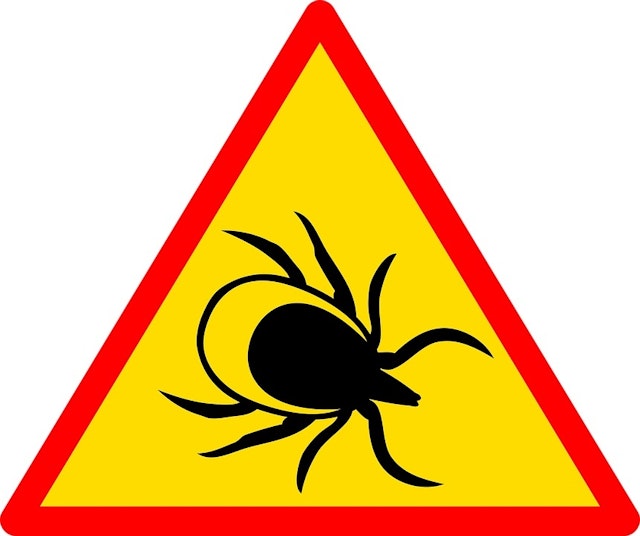
Lyme Disease
Lyme disease is a condition caused by the Borrelia bacteria which is spread by deer ticks. In the United States, the Borrelia burgdorferi and Borrelia mayonii cause Lyme disease, whereas the Borrelia afelio and Borrelia garinii bacterias are the leading causes of Lyme disease in Europe and Asia. The disease does not appear to be transmitted between people, by other animals or through food.
The diagnosis is based on symptoms (such as a skin rash at the site of the tick bite which occurs in 70-80 % of cases about a week after the bite), history of tick exposure and possibly a blood test for antibodies.
Preventive measures include wearing clothing which covers the arms and the legs and using permethrin or DEET based insect repellents. Tuck your pants into socks and your shirt into your pants to minimize gaps through which a tick may reach your skin. Infections are most common in the spring and summer, between April and September. Ticks prefer moist, shaded locations in woodlands, shrubs, tall grasses and leaf litter and wood piles. Pets should not be allowed to roam freely in those areas. After coming back indoors, clothes, gear and pets should be checked for ticks. Showering as soon as possible, looking for ticks over the entire body and removing them reduce the risk of infections. Pay special attention to the armpits, back of knees, groin, bellybutton and trunk, as well as ears, neck and hair.
Symptoms and Signs
Lyme disease symptoms and signs can certainly vary and stages may overlap. The bite itself is often a fairly small, red bump similar to a mosquito bite and may disappear after a few days. However, these are the most common symptoms and signs to look out for if you’ve been infected:
Rashes: After an infected tick bite, a rash can develop anywhere from three to 30 days. The infected area may appear clear in the center with a red edge that continues to expand each day and is often not itchy or painful, but can be quite warm to the touch. Untreated, the rash typically resolves in up to 4 weeks.
Body: Some people may experience fever, chills, body aches and pains, neck stiffness and inflamed lymph nodes in addition to the rash.
Notice: The above information is an educational aid only. Always consult your healthcare provider to ensure the information displayed on this page applies to your personal circumstances.
Prescripton Lyme Disease Medications
- Amoxil
- Bactrim Fort
- Biaxin
- Biltricide
- Canesoral Single
- Ceftin
- Clarithromycin
- Diflucan
- Flagyl
- Mepron Suspension
- Minomycin
- Nilstat
- Nystatin Capsule CMPD
- Nystatin Powder CMPD
- Rofact
- Septrin
- Zinnat
- Amoxicillin
- Cefuroxime
- Fluconazole
- Fluka
- Low-Dose Naltrexone CMPD
- Metronidazole
- Minocycline
- Naltrexone "Clear" CPMD
- Naltrexone "Clear/Blue" CPMD
- Naltrexone CMPD
- Naltrexone CPMD
- Sulfatrim
- Sulfatrim DS
- Minocin
- Septra
- Nystatin
- Bactrim
Your Cart


Your Cart


